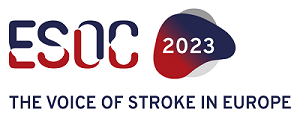A new artificial intelligence (AI) framework has been developed by a research group from Denmark to fulfill the number of strokes that go unidentified by human emergency call handlers.

ESOC 2023. Image Credit: ESOC 2023
The framework surpassed emergency call handlers in determining strokes for both sexes and across all age groups studied. This shows its ability as a supplementary tool for early and accurate stroke identification in the future.
The retrospective study, presented at the European Stroke Organisation Conference (ESOC) 2023, attracted attention from the Danish Stroke Registry and a dataset of more than 1.5 million calls made to the Copenhagen Emergency Medical Services between 2015 and 2020, which contained over 7000 stroke-related calls.
This data was used to train an AI framework to initially transcribe the call audio and further anticipate the risk of stroke depending on the transcribed text.
The results, which were assessed on calls from 2021, disclosed that the AI framework executed more efficiently compared to emergency call handlers in determining stroke cases. The AI framework obtained a recall (sensitivity) of 63.0% and an accuracy (positive predictive value) of 24.9%, which led to an F1 score of 35.7.
In opposition, emergency call handlers consisted of a recall of 52.7% and an accuracy of 17.1%, leading to an F1 score of 25.8.
As one of the first points of contact for patients seeking medical assistance, emergency call handlers play a critical role in facilitating early and accurate stroke recognition. Many stroke cases can go undetected at this stage, leading to delays in treatment that can have potentially life-threatening consequences for patients.
Dr. Jonathan Wenstrup, Study Lead Author, Copenhagen University Hospital
Across Europe, stroke is the second leading cause of death and a major cause of adult disability, affecting over 1 million people each year.
As populations continue to grow and age, the number of people living with stroke is projected to increase by 27% between 2017 and 2047 in the European Union (EU). Despite this, many strokes can be prevented, and if treated early, the likelihood of a positive outcome can be greatly improved.
With the implementation of this new, cost-effective supporting tool, we can enhance stroke identification by call handlers and ensure more patients receive appropriate and timely care, ultimately improving patient outcomes.
Dr. Jonathan Wenstrup, Study Lead Author, Copenhagen University Hospital
Wenstrup continued, “As with any new tool, further research and development are necessary to improve the framework’s accuracy and expand its capabilities. In the future, it may be possible to train the framework directly from the call audio, bypassing the transcription step, as well as incorporating non-word audio—such as a slurred voice—into the training data.
“However, given the promising results of this study, it is already clear that technologies like this have the capability to completely transform stroke diagnosis and care,” added Wenstrup.